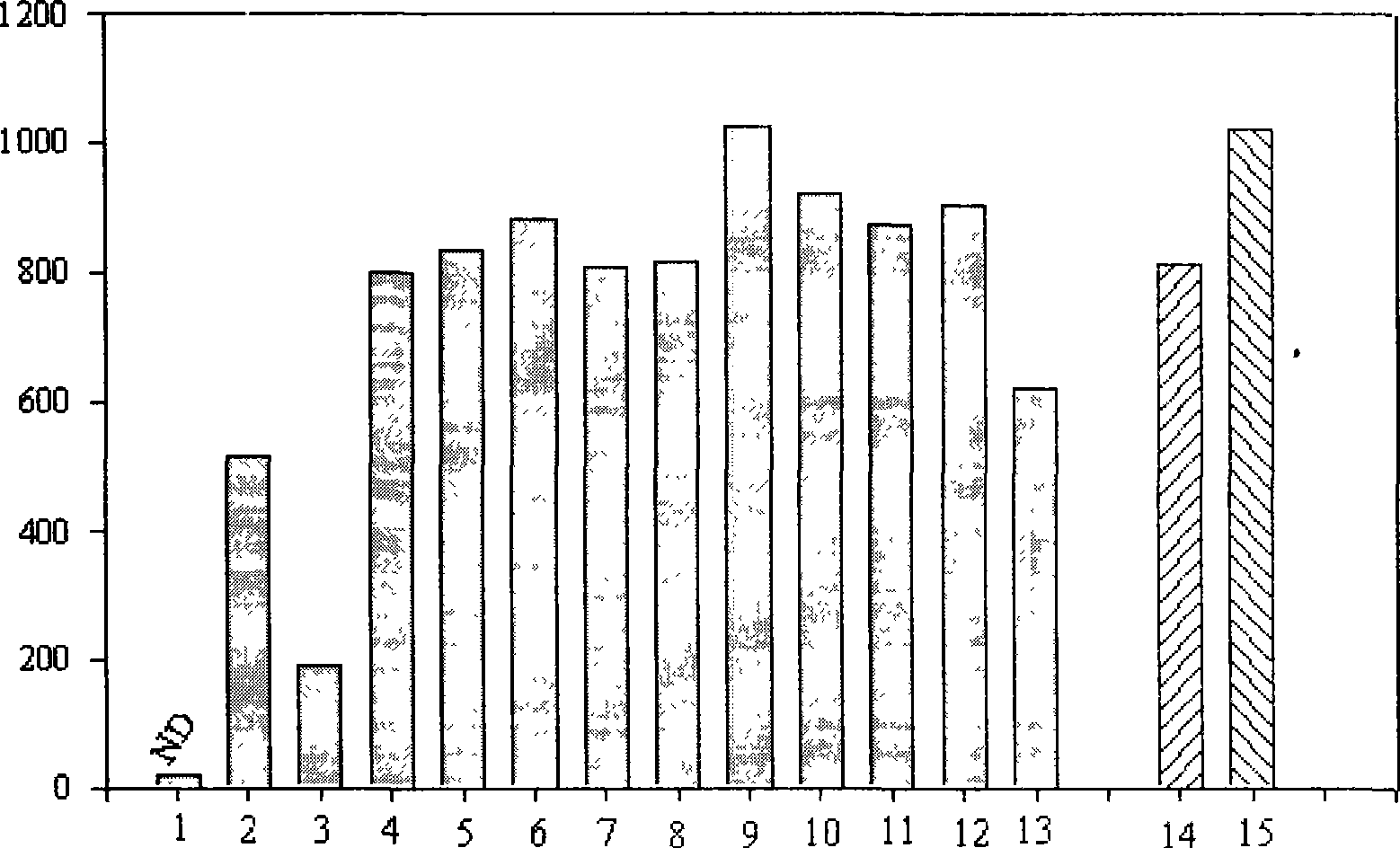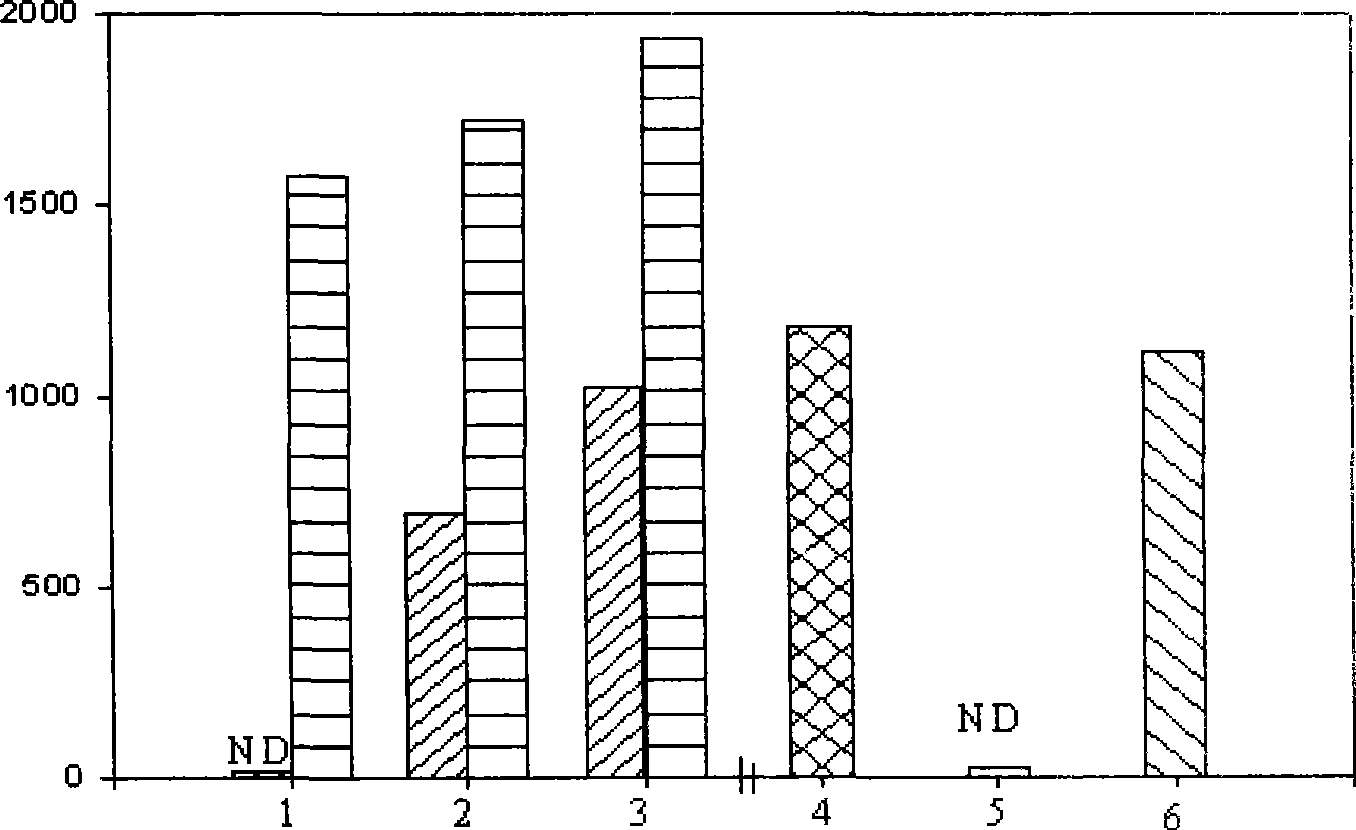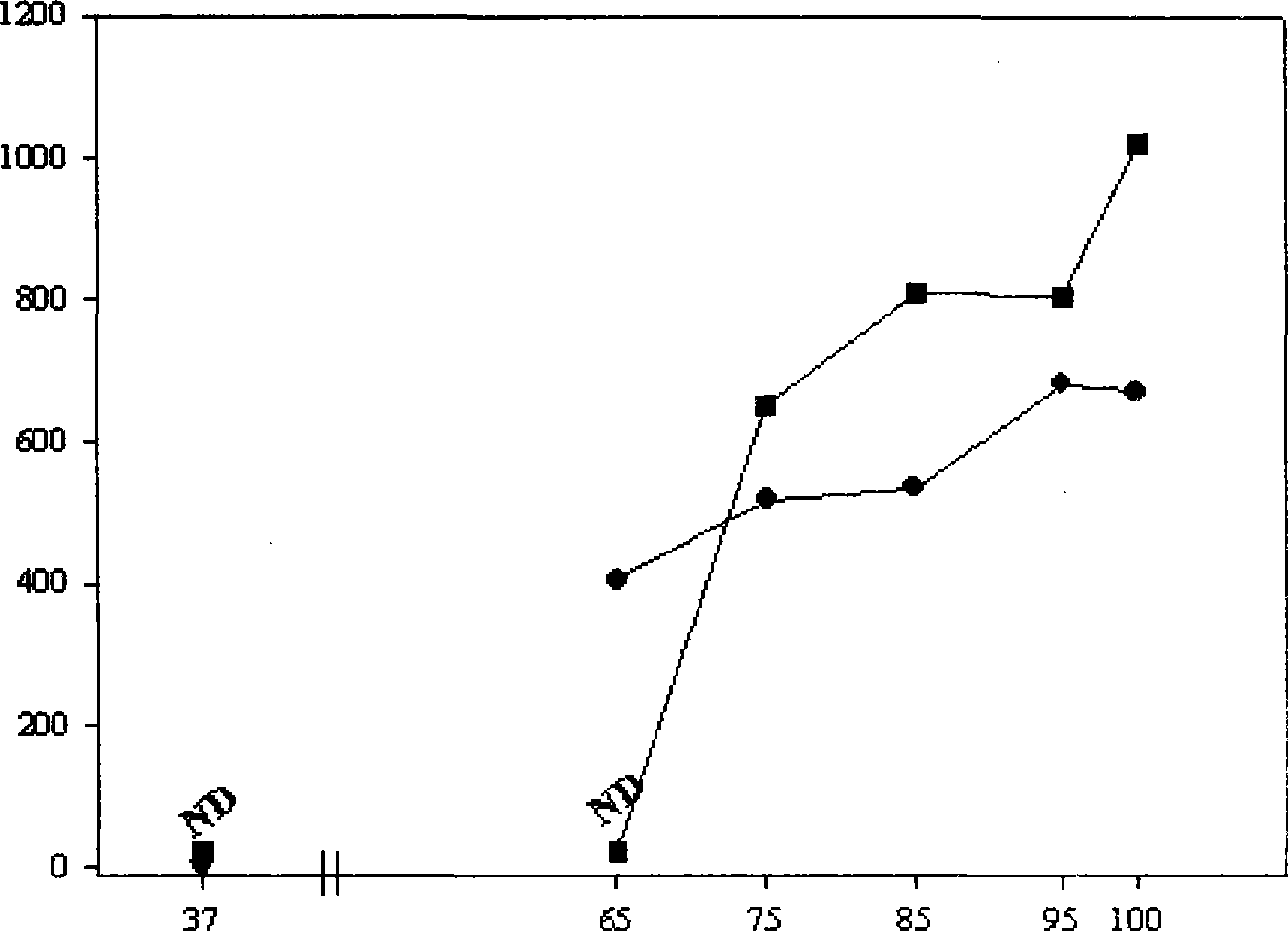Use of bacillus subtilis in degradation of deoxynivalenol
A technology of deoxynivalenol and Bacillus subtilis, which is applied in the directions of application, medical preparations containing active ingredients, bacteria, etc., to achieve the effect of avoiding incomplete degradation
- Summary
- Abstract
- Description
- Claims
- Application Information
AI Technical Summary
Problems solved by technology
Method used
Image
Examples
Embodiment 1
[0020] 1. Connect the strains to be tested from the preserved freeze-dried tubes to the plates for activation twice, incubate at 37°C for 18 hours and take them out for use;
[0021] 2. Insert the activated strain to be tested into MRS or nutrient broth (NB) liquid medium, and simulate it into a food contamination model of 1 μg / mL according to the literature. Cultivate at 37°C in an anaerobic or 180rpm shaker for 12 hours, centrifuge the culture solution at 3000rpm for 15 minutes, and use the supernatant for later use;
[0022] 3. Dilute 8 times with ultra-pure water adjusted to be slightly alkaline in advance, and confirm that its pH value is neutral;
[0023] 4. Use the indirect competitive ELISA kit to detect the culture fluid of all strains to be tested;
[0024] 5. Experimental results such as figure 1 Shown: the abscissa is the test strain number (No. 1 is Bacillus subtilis ZZ; No. 2 is Bacillus subtilis KM; No. 3 is Bacillus licheniformis; No. 4 is Lactobacillus rhamn...
Embodiment 2
[0026] 1. Bacillus was cultured at 37°C with shaking at 180rpm for 12h, and centrifuged at 4000rpm for 10min to separate the supernatant and bacteria.
[0027] 2. The supernatant was filtered with a 0.22 μm microfiltration membrane, and the filtrate was collected;
[0028] 3. The cells were washed twice with normal saline to remove the remaining supernatant, and finally suspended with normal saline so that the cell concentration was 10 10 CFU / mL;
[0029] 4. Take 980 μL of the filter-sterilized supernatant and bacterial suspension, and add 20 μL of 50 μg / mL deoxynivalenol aqueous solution, so that the final concentration of deoxynivalenol is 1 μg / mL, 37 Incubate at ℃ for 3h and 14h for sampling;
[0030] 5. Use an indirect competitive ELISA kit to detect the residual concentration of deoxynivalenol in the sample;
[0031] 6. The experimental results are as follows: figure 2 Shown: the abscissa represents the test strain number (No. 1 is Bacillus subtilis ZZ; No. 2 is Baci...
Embodiment 3
[0033] 1. collect the supernatant of Bacillus subtilis by the method in embodiment 2 for subsequent use;
[0034] 2. Heat the supernatant at 65, 75, 85, 95, and 100°C for 10 minutes, and then add deoxynivalenol (final concentration: 1000ng / mL) for co-cultivation for 3 hours;
[0035] 3. All samples were tested for the residual concentration of deoxynivalenol by indirect competitive ELISA;
[0036] 4. The experimental results are as follows: image 3 Shown: the abscissa represents the heat treatment temperature (° C.), and the ordinate represents the residual concentration of deoxynivalenol in the test sample (ng / mL). ND means that the residual concentration of deoxynivalenol in the sample was not detected. from image 3 It can be seen that the effective degradation components in the supernatant gradually lose their activity with the increase of heat treatment temperature, and the activity loss ratio is larger at 65-75°C.
PUM
 Login to View More
Login to View More Abstract
Description
Claims
Application Information
 Login to View More
Login to View More - R&D
- Intellectual Property
- Life Sciences
- Materials
- Tech Scout
- Unparalleled Data Quality
- Higher Quality Content
- 60% Fewer Hallucinations
Browse by: Latest US Patents, China's latest patents, Technical Efficacy Thesaurus, Application Domain, Technology Topic, Popular Technical Reports.
© 2025 PatSnap. All rights reserved.Legal|Privacy policy|Modern Slavery Act Transparency Statement|Sitemap|About US| Contact US: help@patsnap.com



